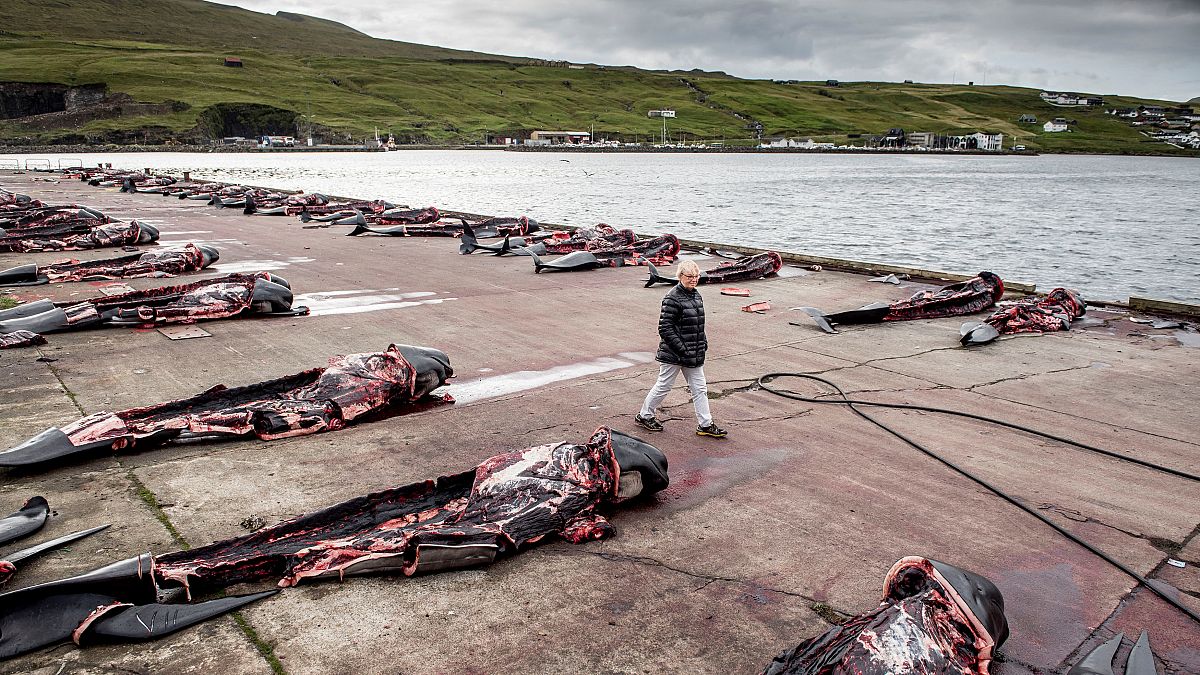Nations on either side of the whale hunting debate are set for a standoff as the International Whaling Commission (IWC) meets Monday, with Japan hoping to overturn the 32-year-old ban on commercial whale hunting.
The 1986 global ban on commercial whaling by the International Whaling Commission (IWC) is being challenged by a delegation from Japan.
The IWC will hear proposals this week in Florianopolis, Brazil, where Japan will argue "scientific purposes" should let their fishermen hunt the world's largest mammals.
A number of other important issues will be discussed during the week-long meeting such as the risks whales face from human-made underwater noise pollution, ship strikes, climate change, and fishing gear entanglement.
What is Japan proposing?
Japan hopes to end the 32-year-old ban on hunting whales by arguing that stocks of minke whales and other species have recovered which could lead to sustainable whaling.
Japan also wants to allow a majority vote, instead of the three-quarters majority to make final decisions on commercial whaling.
"Our challenge at this meeting is whether we can bridge the two different ideas or find a situation where we can agree to disagree so that we can see the future rather than just fighting each other," Joji Morishita, the incoming Japanese commission chairman, told AFP.
Brazil is rallying anti-whaling nations behind a "Florianopolis Declaration," which says commercial whaling is no longer economically necessary and would rather increase global investment in whale watching.
According to Humane Society International, the Japanese proposals would ultimately allow the global ban to be lifted, allowing any country to openly hunt whales for profit.
How does the International Whaling Commision (IWC) keep whales safe?
There are thirteen species of great whales on the planet. All of these species were targeted in the past by commercial whaling and many of their populations have been seriously depleted as a result. Fortunately, no species were driven to extinction, and several populations are now increasing since protection measures were established. However, other populations still remain at critically low levels.
The IWC’s goal is to regulate whaling while also promoting an array of conservation initiatives. The only whaling quotas currently set by the IWC are to support the needs of indigenous peoples who rely on whale blubber for their survival.
What countries still allow commercial whaling?
Iceland and Norway are the only countries that allow commercial whaling and are likely to come under renewed pressure at the IWC meeting, which runs until Friday.
In March of this year, Norway announced a 28% increase of its annual whaling quota to 1,278 whales.
According to Oslo, there are more than 100,000 minke whales in Norwegian waters and resumed hunting them in 1993.
Icelandic fishermen resumed hunting for endangered fin whales earlier this year after a two-year pause. Reykjavik set a target of 191 kills for this season.
How has the International Fund for Animal Welfare (IFAW) reacted?
Although a global ban on commercial whaling came into effect in 1986, around 1,000 whales are still being slaughtered every year. Japanese, Norwegian, and Icelandic whaling fleets continue to harpoon these intelligent, mammoth creatures. The IFAW says these fishermen hunt for profit, not science, as these governments claim.
The IFAW tries to use all possible international conventions and legal strategies to end commercial whaling. Their goal is to reveal the truth about 'scientific whaling' and to ensure that the best scientific research on marine mammals is carried out without harming them.
The IFAW says whales are often pursued to the point of exhaustion before they are harpooned. However, exploding harpoons are often not fatal, and whales are harpooned numerous times before they die. Whales are also able to slow their breathing and heart rate, which makes them appear dead, when in fact they are still living and experiencing extreme pain.
